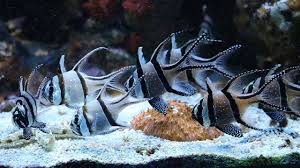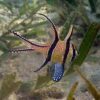The Dragon and Its Relationship with Rebirth Beliefs in Chinese Culture

The dragon, an iconic and powerful figure in Chinese culture, is steeped in deep symbolism that touches upon various aspects of life, including power, wisdom, and fortune. Among the most fascinating and profound connections in which the dragon plays a role in Chinese traditions is its association with the concept of rebirth. In Chinese cosmology, the cyclical nature of life, death, and rebirth has been a key theme in philosophical and spiritual practices for thousands of years. The dragon, a symbol of transformation and continuity, embodies the essential idea of renewal that runs through many Chinese beliefs, myths, and rituals.
In this article, we will explore how the dragon is intricately linked with the ideas of rebirth and spiritual renewal within the context of Chinese culture. We will examine the symbolism of the dragon in relation to Chinese philosophies such as Daoism and Buddhism, its connection with natural cycles, and how these beliefs are reflected in traditional Chinese art, mythology, and festivals.
The Dragon as a Symbol of Transformation
One of the most prominent qualities associated with the dragon in Chinese culture is its ability to transform and renew itself. The dragon, often depicted as a majestic, serpentine creature with mystical attributes, represents the forces of nature and the dynamic flow of energy that permeates the universe. In both ancient myths and spiritual traditions, the dragon’s ability to metamorphose symbolizes the regenerative power of life and the continuous process of growth and rebirth.
In Chinese folklore, the dragon is not just a mythical beast but an embodiment of cosmic energy, capable of traversing the heavens, the oceans, and even the earth itself. It is a creature that is closely linked to the forces of the natural world, particularly the cycles of weather, including the rains that nourish the earth and allow crops to grow. In this sense, the dragon’s influence over the natural world can be seen as a metaphor for the endless cycles of creation and destruction, life and death, that govern the cosmos.
In Chinese Daoism, which emphasizes harmony with the natural world and the cultivation of life force (Qi), the dragon is a symbol of the flow of energy (Qi) throughout the body, mind, and universe. The dragon’s ability to move through different realms and to transform is symbolic of the Daoist concept of spiritual evolution. Rebirth, in this context, is not just a literal reawakening but a spiritual transformation that occurs when one achieves enlightenment and harmony with the Dao.
The Dragon and the Daoist Concept of Immortality
In Daoist philosophy, the concept of immortality is deeply intertwined with the idea of spiritual rebirth. Immortality, in this sense, is not an escape from the natural cycles of life, but rather the transcendence of the limitations of the human body and the realization of eternal life through spiritual practice. The dragon plays a significant role in Daoist myths and teachings related to immortality, symbolizing the transformation of the self from a mortal being into an immortal one.
One of the most well-known Daoist legends involving the dragon is the myth of the dragon who ascends to the heavens after undergoing a transformation. According to this legend, the dragon was once a common carp that swam up a waterfall and transformed into a magnificent dragon. This story is often interpreted as an allegory for the process of spiritual rebirth—by overcoming obstacles and rising above one’s limitations, the individual can achieve spiritual enlightenment and immortality. The transformation from a carp to a dragon is a powerful symbol of self-cultivation and the potential for spiritual renewal.
Daoist immortals, or “xian,” are often depicted as being in possession of the “elixir of life,” a symbol of the regenerative power that can prolong life and even lead to immortality. In some Daoist artwork, dragons are depicted as guardians of this elixir, symbolizing their role in guiding the seeker of immortality through the process of spiritual transformation. In this sense, the dragon embodies the belief that through spiritual cultivation, one can achieve rebirth and transcendence, ultimately gaining eternal life.
The Dragon in Chinese Buddhism and the Cycle of Rebirth
In Chinese Buddhism, the concept of rebirth is central to the understanding of life and the afterlife. The idea of reincarnation, or samsara, is deeply ingrained in Buddhist teachings, and it is believed that the cycle of birth, death, and rebirth continues until an individual reaches enlightenment and breaks free from the cycle of suffering. The dragon plays a significant role in Buddhist iconography, where it is often associated with the concept of spiritual transformation and the attainment of enlightenment.
The dragon’s association with rebirth in Buddhist traditions can be seen in the way it is portrayed as a protector of sacred teachings and a guide for those on the path to enlightenment. In some Buddhist paintings and sculptures, dragons are depicted as encircling the Buddha or as attendants to bodhisattvas (enlightened beings who choose to remain in the cycle of birth and death to help others achieve enlightenment). The dragon’s role as a protector of wisdom and spiritual growth reinforces its connection to the process of rebirth—by helping the practitioner to transcend worldly attachments and overcome obstacles, the dragon symbolizes the transformative power of enlightenment.
In addition to its role as a protector of the Buddha, the dragon is also seen as a symbol of the “bodhisattva vow,” the commitment to assist others in their journey toward liberation. This vow, which is central to Mahayana Buddhism, emphasizes compassion and the desire to help all beings break free from the cycle of samsara. The dragon, in this context, represents the compassionate forces of the universe that assist in the spiritual rebirth of sentient beings.
The Dragon and the Natural Cycle of Rebirth
Beyond its religious significance, the dragon is also deeply connected to the natural cycles of rebirth in Chinese culture. The dragon is often depicted as a symbol of fertility, renewal, and growth, particularly in relation to agriculture. In ancient China, the arrival of rain brought by the dragon was seen as a sign of prosperity and a blessing for the crops. The dragon’s role in bringing the rains, which are essential for the growth of plants and the continuation of life, reflects the cyclical nature of the natural world and the idea that life is constantly regenerating itself.
In Chinese art and folklore, dragons are often shown emerging from clouds or rising from the sea, their presence marking the renewal of life and the promise of future growth. This connection between the dragon and natural cycles of rebirth is particularly evident in the Dragon Boat Festival (Duānwǔ Jié), a celebration that marks the start of summer and the beginning of the agricultural season. The dragon boat races that take place during this festival are a symbol of the dragon’s role in ensuring the fertility of the land and the prosperity of the people.
The dragon’s presence in agricultural rites and festivals also ties it to the belief that rebirth is not only a spiritual process but a physical one as well. Just as the land is reborn each year with the arrival of the rains, so too are the people reborn through their connection to the cycles of nature.
The Dragon in Chinese Mythology and Its Connection to Rebirth
Chinese mythology is rich with stories of dragons that are associated with rebirth and renewal. One of the most famous is the legend of the dragon who guards the “Peach of Immortality.” In this myth, the dragon watches over a magical peach tree that bears peaches capable of granting eternal life to those who consume them. The peach, symbolizing the cyclical nature of life, is also associated with the concept of rebirth. The dragon’s guardianship of the peach tree represents its role as a protector of renewal and transformation, ensuring that the cycle of life continues uninterrupted.
In addition to this myth, dragons are often seen in Chinese mythology as bringers of good fortune and prosperity. The dragon’s ability to transform and its association with the natural elements symbolize the continual process of regeneration that occurs in both the physical and spiritual worlds. The idea of rebirth is not just a metaphysical concept but also a practical one, deeply embedded in the agricultural and social life of ancient China.
Conclusion
The dragon’s relationship with the concept of rebirth in Chinese culture is multifaceted and deeply symbolic. As a creature of transformation, the dragon embodies the cycles of life, death, and renewal that are central to Chinese philosophical and spiritual traditions. Whether through its role in Daoist immortality myths, its connection to the natural world and agricultural fertility, or its representation in Buddhist teachings about spiritual enlightenment, the dragon is a powerful symbol of rebirth and transformation.
From ancient myths and religious practices to festivals and artistic representations, the dragon serves as a reminder of the constant process of renewal that governs both the cosmos and the human experience. Its presence in Chinese culture highlights the importance of spiritual growth, the interconnection between nature and humanity, and the eternal cycle of life. Through the dragon, Chinese culture celebrates the profound idea that every end is also a new beginning, and that transformation and renewal are essential parts of the human journey.

